67th Course on Palladian Architecture
Palladio on the building siteVicenza + Veneto, 26th August - 1st September 2025
Lecturers
Donata Battilotti, formerly Università di Udin

Battilotti taught History of Architecture at the University of Udine until 2023. Her research focuses primarily on Andrea Palladio, the urban and territorial history of sixteenth-century Vicenza, and the Venetian villas. Her publications include Vicenza al tempo di Andrea Palladio attraverso i libri dell’estimo del 1563-1564 (1980), Le ville di Palladio (1990), the updated edition of Lionello Puppi’s monograph Andrea Palladio (1999), the edited volume on the villas of the province of Vicenza for the Istituto Regionale Ville Venete (2005), and Le mura di Vicenza nel Cinquecento. Cronaca di un fallimento (2020). Since 2003, she has been a member of the Academic Committee of the Centro Internazionale di Studi di Architettura Andrea Palladio and is also a member of the Accademia Olimpica of Vicenza.
Giovanna Battista, MiC - Soprintendenza Archeologi, Belle Arti e Paesaggio di Verona, Rovigo e Vicenza
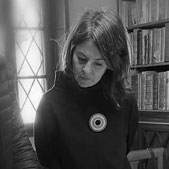
Graduated in Architecture from the University of Florence in 1997, Battista obtained a Specialization in Monument Restoration at La Sapienza University in Rome and a PhD in Landscape Analysis and Valorization at the University of Molise. She carried out teaching and research activities at the Department of History of Architecture and Restoration of Architectural Structures of the University of Florence as part of the “Gruppo di Ricerca sul Restauro Archeologico”, also participating in several research missions in France and Jordan.
Since 2012, she has been an architectural officer at the Ministero della Cultura, engaged in landscape protection, high-level supervision of restorations of listed buildings, and project management of ministerial public works.
Guido Beltramini, Direttore CISA Andrea Palladio

Guido Beltramini has been director of the Centro Internazionale di Studi di Architettura (CISAAP) since 1991. He was a contract professor at the University of Ferrara from 1994 to 2002 and has been a visiting professor at the Harvard University Graduate School of Design since 2015. His main interest is the history of Renaissance architecture, with a special focus on Palladio, Venetian architecture, the art of war, and the study of the Antique.
Andreas Beyer, Universität Basel, Basilea

From 2003 to 2025, he was Professor of Art History at the University of Basel. He directed the German Center for Art History in Paris from 2009 to 2014. His research and publications focus, among other topics, on Neapolitan architecture of the fifteenth century, Italian Renaissance art, and German Neoclassical art. In 1983, he published the first German edition of Palladio’s Quattro Libri dell’architettura and has since worked extensively on the Vicentine architect, with a particular focus on the Teatro Olimpico and the Quattro Libri. Recent books include Il corpo dell’artista. La traccia nascosta della vita nell’arte, Turin 2023; Benvenuto Cellini and the Embodiment of the Modern Artist, Reaktion Books, London 2025.
Cammy Brothers, Northeastern University, Boston
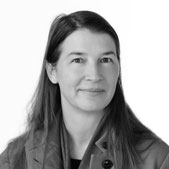
Professor Cammy Brothers, Northeastern University, specializes in Italian Renaissance and Mediterranean art and architecture. She is the author of two monographs, Michelangelo, Drawing and the Invention of Architecture (Yale University Press, 2008) and iuliano da Sangallo and the Ruins of Rome (Princeton University Press, 2022). She is at work on her third book, Memory, Preservation, and Appropriation: The Contested Architectural Legacy of Islamic Spain. She is the editor, with Kathleen Christian, of a new book series for Harvey Miller Press, "All'Antica: Early Modern Perspectives on the Antique." In addition to her scholarly publications, she is also a frequent contributor on art and books to the Wall Street Journal.
Federico Maria Cetrangolo, MiC - Soprintendenza Archeologi, Belle Arti e Paesaggio di Verona, Rovigo e Vicenza
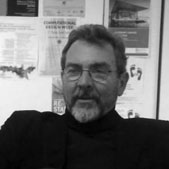
Graduated in Architecture from the Iuav University of Venice (2003) with a thesis on the restoration of the Tomb of Mastino II at the Scaliger Tombs in Verona, he obtained a specialization in the Con-servation of Architectural Heritage from the Politecnico di Milano (2017) with a thesis on the restora-tions of the Palazzo della Dogana di Terra in Verona. As an official of the Superintendence, he collab-orated from 1985 to 1997 on the restoration of Palazzo Barbaran Da Porto in Vicenza.
Silvia Dandria, MiC - Soprintendenza Archeologi, Belle Arti e Paesaggio di Verona, Rovigo e Vicenza

Silvia Dandria graduated from the Università IUAV di Venezia and obtained a PhD in Conservation of Architectural Heritage from the Politecnico di Milano with a dissertation on historical construction techniques. After about ten years of teaching collaborations at the Politecnico and freelance work focused on the surveying and analysis of historical buildings, in 2018 she was appointed as an architect officer at the Soprintendenza Archeologia, Belle Arti e Paesaggio for the provinces of Verona, Rovigo, and Vicenza. There, she is responsible for the protection of monuments and landscapes in her jurisdiction and carries out duties as RUP, designer, and site manager within the framework of public works on monumental buildings. Her research focuses on restoration theory, intervention methodologies, and the history of heritage protection in cities and historic centers in the second half of the twentieth century, also through her work as coordinator of the Archivio Piero Gazzola.
Edoardo Danzi, Università Iuav di Venezia

Specializzato in rilievo stratigrafico dell’architettura ed esperto nella mappatura delle macro-morfologie di alterazione e degrado dei materiali, lavora specialmente nel campo del restauro del patrimonio architettonico, seguendo le diverse fasi di progettazione: dagli studi analitici e di rilievo per la conoscenza dei manufatti al progetto e direzione dei lavori. Per molti anni docente a contratto all’Università IUAV di Venezia, dove ha insegnato Restauro, e all’Istituto Veneto per I beni Culturali, dove ha insegnato Restauro della pietra e Storia dell’architettura veneziana; con contratti anche in altre università italiane (Facoltà di Ingegneria di Padova e Dipartimento di Ingegneria Civile, Ambientale e Meccanica di Trento). Ha partecipato, coordinato e/o diretto, diverse ricerche internazionali e scambi culturali, presentando i risultati dei lavori di ricerca e di progettazione in molti convegni nazionali ed internazionali. Ha cooperato con il CISA e con altre istituzioni culturali (ICCROM - UNESCO/BRESCE - Getty Conservation Institute - Soprintendenza di Venezia e Laguna - The Venice in Peril Fund and Venetian Heritage Inc., Co.Ri.La., L.A.M.A.) come docente in Seminari e Corsi internazionali sul Restauro Architettonico e sulle Tecniche di conservazione della pietra naturale e artificiale. Ha contribuito a progetti di conservazione e restauro di strutture stratificate ed edifici storici in Italia e all’estero. Tra gli studi più importanti, si segnalano quelli su edifici palladiani (Basilica e Teatro Olimpico, pubblicati quest’ultimi nel volume Palladio, materiali, tecniche, restauri, 2011), edifici veneziani (Nartece della Basilica Marciana, Arsenale, Teatro La Fenice, Galleria dell’Accademia, Palazzo Mocenigo Casa Nuova e Ca’ Loredan Vendramin Calergi), a Pisa (Pergamo di Giovanni Pisano nella Cattedrale), a Roma (progetto di restauro e allestimento museale del Vittoriano) e in Libano per i siti archeologici di Baalbek e Tiro.
Paolo Faccio, Università Iuav di Venezia

Paolo Faccio, born in Taranto on May 26, 1959, graduated in Civil Engineering from the University of Padua in 1985 and in Architecture from Università IUAV di Venezia in 1998. He has been Full Professor of Restoration at Università IUAV di Venezia since 2019. Since 2022, he has served as Director of the SSIBAP – Scuola di Specializzazione in Beni Architettonici e del Paesaggio. He is the author of numerous essays on historical construction techniques, seismic risk reduction for cultural heritage, and the conservation of twentieth-century architecture. He has received national and international awards for restoration, including the MÉDAILLE DE LA RESTAURATION from the Académie d'Architecture in Paris for the restoration of Carlo Scarpa’s Tomba Brion, and the Torta Prize for the best restoration in Venice for the project at Palazzo Contarini del Bovolo. He has designed interventions funded by the PNRR, such as at Villa di Maser by Andrea Palladio and Villa Rossi in Santorso (VI) by Caregaro Negrin.
Filippo Giustiniani, engineer
Gianmario Guidarelli, Università degli Studi di Padova

Gianmario Guidarelli is Associate Professor of Architectural History at the University of Padua (DICEA) and Adjunct Professor at the Theological Faculty of Triveneto. He coordinates the projects Chiese di Venezia. Nuove prospettive di ricerca, Armonie Composte. Ciclo di seminari sul paesaggio monastico (with Elena Svalduz), and La città medievale. La città dei frati. Medieval city. City of the friars (with Silvia Beltramo). He is the Principal Investigator of the PRIN 2022 research project CoenoBI(u)M. Art and Architecture of the Cassinese Benedictine Congregation (15th–18th century): Strategies for Digital and Spatial Analysis through BIM Models. He is a resident member and Scientific Board member of the Ateneo Veneto di Scienze, Lettere ed Arti. Since 2024, he has served as the Editor-in-Chief of Ateneo Veneto (classified in band A for sector E 8). He has published monographs and articles in international journals on the history of medieval and Renaissance architecture, with particular focus on Venice. His current research focuses on religious architecture in the Renaissance and on the theme of the monastic landscape in Italian Humanism.
Charles Hind, formely Royal Institute of British Architects, London
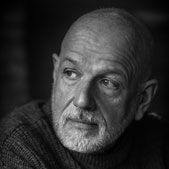
Charles Hind is the Chief Curator Emeritus of the Royal Institute of British Architects, having retired in 2024, and is a Visiting Fellow of the CISA Andrea Palladio and Chairman of the Editorial Board of the RIBA Palladio Drawings Cataloguing Project. After a history degree at Oxford and a false start as a librarian, he moved to Sotheby's to run an annual sale of architecture and design drawings, before becoming an architecture editor for the Macmillan Dictionary of Art and he joined the RIBA as Curator of Drawings in 1996. He has published and lectured widely on British architectural history, principally of the 17th to 19th centuries and curated numerous exhibitions derived principally from the RIBA Collections, most notably in this context (with Dr Guido Beltramini) Palladio and his Legacy. A Transatlantic Journey (which toured in the USA 2010-11) and Palladianism: the Good, the Bad and the Unexpected (London, 2015-16). He has recently co-authored The Architectural Drawing Book (RIBA Publishing, 2023) and is currently chairman of the Lutyens Trust.
Olivia Horsfall Turner, Royal Institute of British Architects, Londra

Olivia Horsfall Turner è Chief Curator del Royal Institute of British Architects. Dopo una laurea in History and History of Art a Cambridge, è stata Mellon Fellow a Yale e ha completato il dottorato presso lo University College London. Dopo un periodo come Junior Research Fellow al Trinity College di Dublino, ha lavorato per English Heritage come Architectural Investigator e successivamente come Historian per il Survey of London. Dal 2014 al 2024 è stata Senior Curator of Architecture and Design presso il Victoria and Albert Museum di Londra, dove è stata responsabile della collezione di disegni di progetto, documentando i processi nelle arti applicate, compresa l’architettura, dal Quindicesimo secolo fino a oggi. Ha pubblicato su diversi temi, tra cui pitture murali medievali e antiquaria dell’età moderna; il suo libro più recente è Owen Jones and the V&A: Ornament for a Modern Age (Lund Humphries, 2023). I suoi interessi principali includono la storia della rappresentazione architettonica e la storia dello stile. È Fellow della Society of Antiquaries.
Adelmo Lazzari, architect

Graduated in Architecture from the Università Iuav di Venezia in 1998. Architect and restorer with expertise in stratigraphic investigations, in 1999 he founded, together with Serena Franceschi and other professionals, the engineering company L.A.I.R.A. s.r.l., Laboratorio di Archeologia, Ingegneria, Restauro e Architettura (www.laira.it), where he serves as Board Member, Legal Representative, and Technical Director. Together with colleague Serena Franceschi, he focuses on preliminary investigations for restoration, as well as the design and management of restoration projects. Ongoing restoration works include: the Acquedotto Claudio – Rome; Chiesa Nuova - Santa Maria in Vallicella – Rome; Chiesa di San Lorenzo – Verona; and the Ca’ Foscari San Tomà headquarters – Venice. Ongoing restoration and enhancement works include: the archaeological structures of the Lazzaretto di S. Teresa – Magazzino 26 – Port of Trieste; the archaeological structures of the Chiesa di San Paolo a Illegio – Tolmezzo (UD); and the uncovered remains of the archaeological area of San Martino – Ovaro (UD). Numerous projects under the PNRR – Piccoli Borghi program are currently underway, focusing on the protection and enhancement of rural architecture and landscape in Veneto and Friuli Venezia Giulia. Recently completed interventions include restoration, excavation, and enhancement works at: Villa Thiene – Quinto Vicentino (VI); Castello di San Martino – Cervarese Santa Croce (PD); the archaeological area of Via dei Capitelli – Trieste; and the archaeological area of Via Scavi e Via Neroniana – Montegrotto Terme (PD). Previously licensed to practice in Croatia. For the past twelve years, together with Serena Franceschi and restorer Barbara D’Incau, he has worked on investigations and restoration of the gates and portions of the Venetian walls in the city of Cattaro (Montenegro) and the city of Lesina (Croatia). With LAIRA s.r.l., he recently conducted surveys, studies, and stratigraphic investigations on the Sala del Capitolo of the Basilica del Santo – Padua, which led to the discovery of previously unknown fragments of decorations in the vault passageways, attributed to Giotto. He is a member of the scientific committee of the Associazione Città Murate del Veneto, an association of the Veneto Region that brings together 35 fortified cities.
Francesco Marcorin, Curatore del Palladio Museum
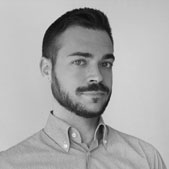
Having graduated with the a first-class degree in architecture, Francesco Marcorin obtained a PhD from the Venice University Institute of Architecture (iuav) with a thesis on Michele Sanmicheli (2014). He then collaborated with the State Archives in Verona, where he conducted an initial re-ordering of the archive of Bevilacqua di San Michele alla Porta.
In addition to studies on Sanmicheli and his workshop, his current research interests include spolia in the Late Antique and Modern Ages, Renaissance architectural theory, and patronage and art collecting in 16th to 18th century Veneto.
Irena Murray, formely Royal Institute of British Architects, London
Damiana Lucia Paternò, SABAP per l’area metropolitana di Venezia
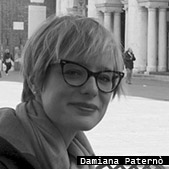
Graduated in Architecture from Università Iuav di Venezia in 2008, she earned a PhD in Conservation of Architectural Heritage from Politecnico di Milano in 2013. Since 2008, she has been involved in teaching as an assistant at Università Iuav di Venezia. At the same institution, she has held research fellowships and served as adjunct professor in Architectural Restoration. She has conducted studies on the construction techniques used by Andrea Palladio, developing a cataloguing project in partnership with the Centro internazionale di studi di architettura Andrea Palladio, with which she has collaborated since 2010. She has participated in national and international conferences and authored essays and articles on the physical substance of Palladio’s works and their restorations, publishing the book Palladio nel tempo. Trasformazioni, autenticità, mito tra Ottocento e Novecento (2014).
Since 2018, she has worked as an architect officer at the Soprintendenza Archeologia Belle Arti e Paesaggio for the metropolitan area of Venice and the provinces of Belluno, Padua, and Treviso, where she is also functional area coordinator for education and research and liaison for the Landscape Plan of the Veneto Region.
Mario Piana, formely Università Iuav di Venezia
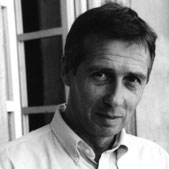
Graduated in 1974 from the Istituto Universitario di Architettura di Venezia, from 1979 to 1998 he worked as an architect at the Soprintendenza ai Beni Architettonici e Ambientali di Venezia, serving as Soprintendente reggente in 1981–82. As a UNESCO consultant in 1990 and 1994, he assisted local teams in the restoration of churches in Quito (Ecuador) damaged by an earthquake, and in 1996 he contributed to the structural consolidation project for the fortress of San Juan de Ulúa in Veracruz (Mexico). He has designed and directed numerous restoration projects, including Palazzo Grimani at Santa Maria Formosa, the Scala Contarini del Bovolo, the Castello di Rovigo, the Gaggiandre of the Arsenale, the Peristilio, the Tablino and the Scala ovata of the Convento della Carità, the Cattedrale di Torcello, the Basiliche dei Frari and della Salute, and the churches of San Giorgio Maggiore and Santa Maria dei Miracoli. From 1998 to 2022 he taught Restauro Architettonico at the Università IUAV di Venezia and was Director of the first three-year cycle of the Scuola di specializzazione in beni architettonici e del paesaggio. Since 2010 he has been a member of the Collegio docenti of the Dottorato di storia dell’architettura. Author of numerous publications on restoration and the history of building techniques in the Venetian lagoon, he has been a member of the Consiglio scientifico of the CISA since 2004 and, since 2018, a member of the Istituto Veneto di Scienze, Lettere ed Arti. He is currently proto of the Basilica di San Marco.
Francesca Salatin, Università Iuav di Venezia
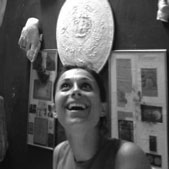
Graduated in Architecture, she obtained her PhD in 2015 with a dissertation on the reception of the Basilica of Maxentius. She is an architect specialized in restoration and heritage conservation. Since 2009, she has collaborated in various capacities with several universities, including Università Iuav di Venezia and the University of San Marino. With a research project on Venetian publishing, she was a research fellow at the Branca Center of the Giorgio Cini Foundation in Venice.
Her research spans multiple disciplines, from the reception of antiquity in Renaissance culture to treatise literature, from construction techniques to heritage conservation. She is the author of several essays, particularly focused on the reception of Vitruvius’s work.
Marlene Schwemer, Universität Wien

Marlene Schwemer is a PhD candidate in History of Art at Yale. She holds a BA and MA in History of Art and Architecture as well as a BA in Romance Studies (Italian and Portuguese) from the University of Vienna, where she also spent two semesters abroad at the Università Ca’ Foscari in Venice and the Università Roma Tre in Rome. Her research investigates the intellectual intersections between the study of antiquity and architectural practices in sixteenth-century Italy, highlighting the role of drawing in design processes. Through an interdisciplinary approach, she explores how representations of ancient and all’antica architecture blend reality and fiction in shaping historical narratives and antiquarian knowledge. In this context, she has developed a particular interest in the work of Andrea Palladio, reflected in her recent essay forthcoming in Annali di architettura, which examines the relationship between his drawings of antiquity and his design for the Villa Pisani at Montagnana. Marlene’s research has been supported by fellowships from the German Center for Venetian Studies, the International Center for Studies on Andrea Palladio Architecture, and the Stiftung Bibliothek Werner Oechslin in Switzerland.
Emanuela Sorbo, Università Iuav di Venezia

Emanuela Sorbo, architetto, PhD, is Associate Professor of Architectural Restoration at Università Iuav di Venezia. She is a member of the PhD board in Storia delle Arti at Università Ca’ Foscari and of the council of the Scuola di Specializzazione in Beni Architettonici e del Paesaggio (Iuav), and serves as reviewer for Reprise and Anvur. She is the Iuav scientific coordinator of the European Erasmus+ project HERSUS, of the Inter-University Center Cespita, and coordinates for Iuav both the CarveLand network and the research cluster MATESCA, through which she has initiated agreements and research on monuments and sites of cultural interest with public institutions (Sabap-Vr, Sabap-Met, DRM-Veneto, the municipalities of Vicenza, Verona, Schio, Brendola). She has conducted preliminary studies and research for conservation projects on monuments and urban areas of significant cultural interest, such as: Giardini Valmarana-Salvi and Teatro Olimpico in Vicenza, Arena and Teatro Romano in Verona, Fabbrica Alta in Schio, Ala Scarpa of the Gypsotheca in Possagno. Since 2023, she has been the editor of the series Matesca-Ricerche (Marsilio), with an international scientific committee. Her research focuses on the forms and techniques of conservation and restoration of ruins and abandoned sites, on which she regularly publishes monographs and essays in national and international journals.
Vitale Zanchettin, Musei Vaticani, Roma; Università Iuav di Venezia

Vitale Zanchettin (1967) is associate professor of History of Architecture at Università Iuav di Venezia, where he teaches since 2001 and where he earned his his PhD in History of Architecture and Urban Planning, with a dissertation on social housing in Germany in the Thirties (1999).
As a fellow at the Bibliotheca Hertziana – Max Planck Institut für Kunstgeschichte in Rome, he studied the urban development of Rome in the early 1500s. Later on, he concentrated his research on the work of Carlo Scarpa, focusing on the construction process and the architectural drawings. In 2006 he collaborated with the Österreich Institut in Rom on the Adolf Loos exhibition (Rome 2007). As Alexander von Humboldt fellow (2007–2009), he concentrated his research on Michelangelo as architect, and on the structural travertine building process at the Fabbrica di San Pietro. At that time he was visiting professor at the Rheinische Friedrich-Wilhelms-Universität Bonn.
For his research on the Vatican Basilica he was awarded the Hanno-und-Ilse-Hahn prize from the Bibliotheca Hertziana – Max Planck Institut für Kunstgeschichte in 2009.
In 2012 was a visiting professor at Virginia University and further research about the early architectural work Michelangelo at Kunsthistorisches Institut di Firenze – Max Planck Institut. Since 2000 he collaborated in many projects with the Centro Internazionale di Architettura Andrea Palladio in Vicenza, becoming member of its scientific committee. Since 2015 he is the curator of the Office of Architectural Superintendance at the Vatican Musuems, managing the scientific supervision of the architectural restorations. At the moment his research is focused on Raphael’s painted architecture.